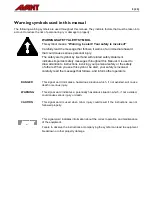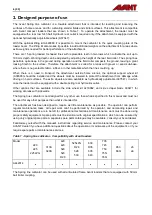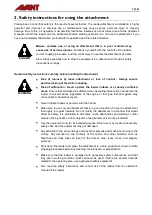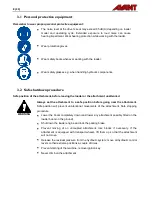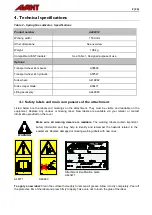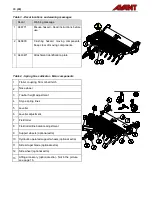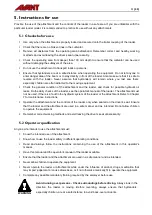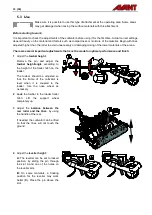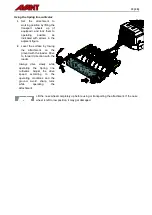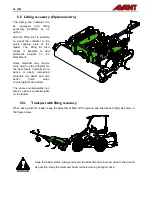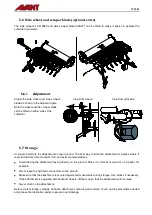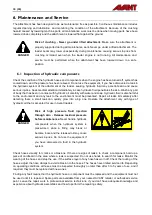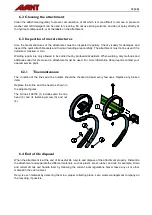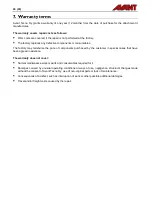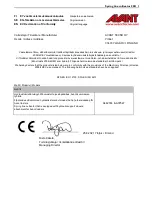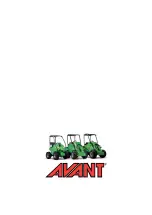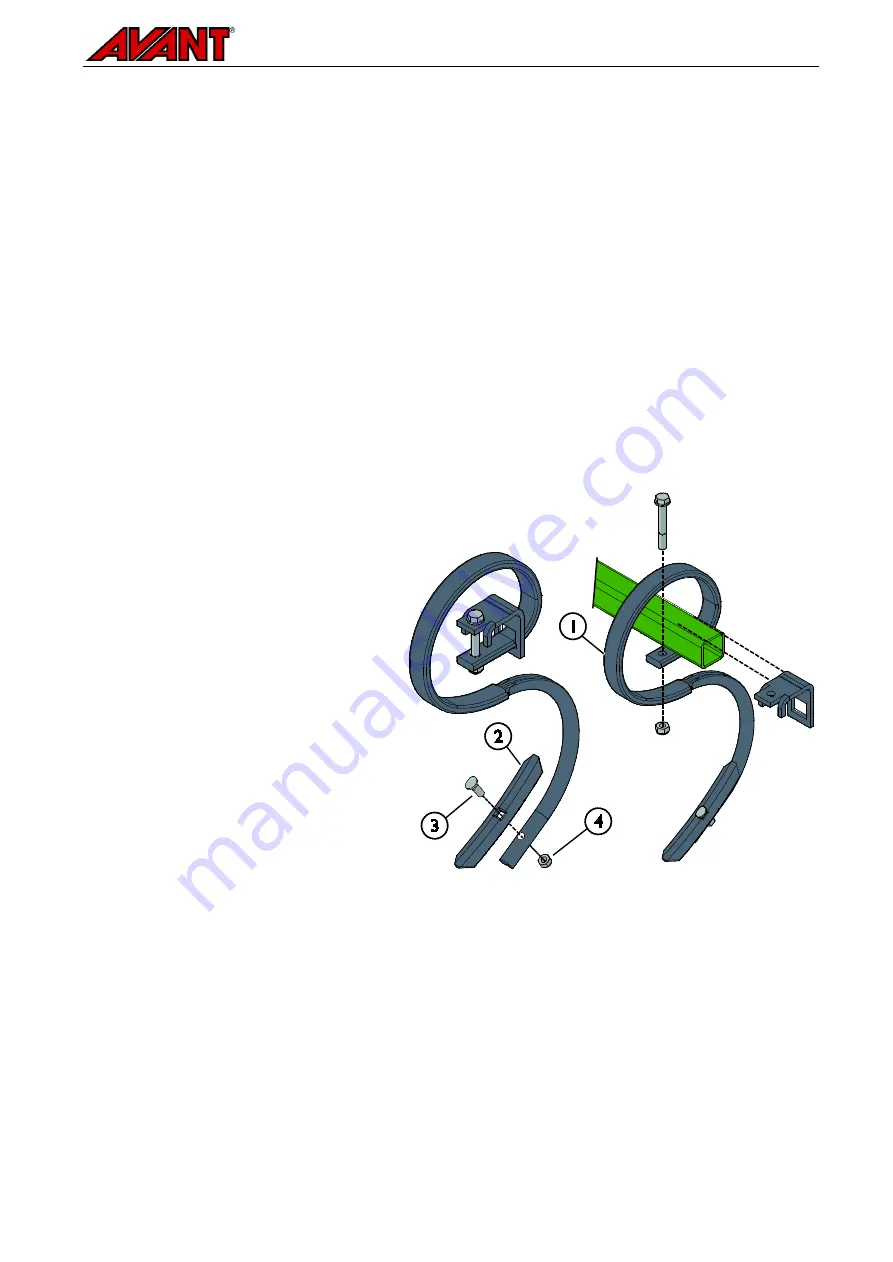
19 (22)
6.2
Cleaning the attachment
Clean the attachment regularly to prevent accumulation of dirt which is more difficult to remove. A pressure
washer and mild detergent can be used for cleaning. Do not use strong solvents, and do not spray directly at
the hydraulic components, or at the labels on the attachment.
6.3
Inspection of metal structures
Also the metal structures of the attachment must be inspected regularly. Check visually for damages and
inspect the quick attach brackets and their surrounding area carefully. The attachment must not be used if it is
deformed, cracked, or torn.
Welding repairs are only allowed to be carried out by professional welders. When welding, only methods and
additives suited for steel used in attachment must be used. For more information about repairs contact your
nearest service point.
6.3.1
Tine maintenance
The condition of the tines and tine holders should be checked at least every few uses. Replace any broken
items.
Replace the S-tine and tine head as shown in
the adjacent figures.
The S-tine kit 66150 (1) includes also the tine
head (2) and its fastening screw (3) and nut
(4).
6.4
End of life disposal
When the attachment is at the end of its useful life recycle and dispose of the attachment properly. Dismantle
the attachment and separate the different materials, such as plastic, steel, rubber, and oils, for example. Drain
and collect all oils and handle them by following the current local regulations. Never leave any oil or other
material in the environment.
Recycle each material by delivering them to a proper collecting place. Let a waste management company do
the recycling, if possible.
Summary of Contents for A442314
Page 2: ...Spring tine cultivator 2021 1 ...
Page 22: ......

